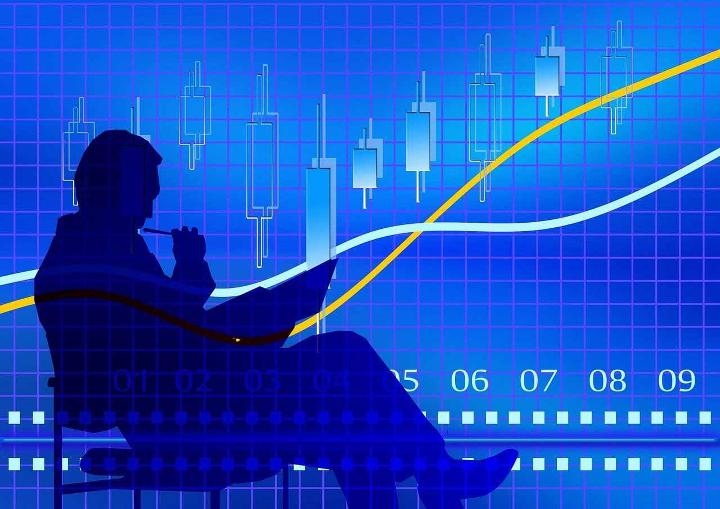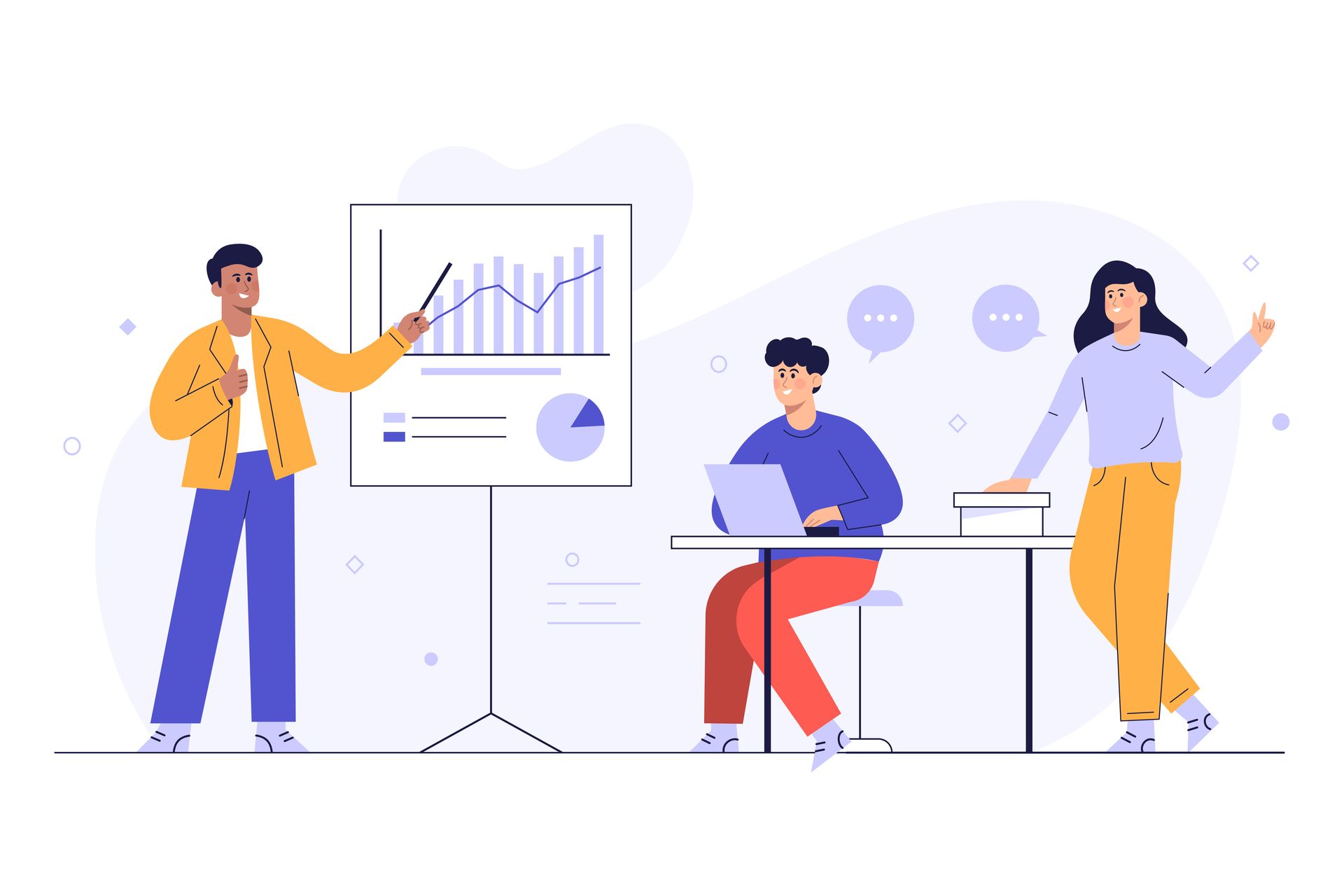Genetic algorithms provide novel approaches to solving challenging issues using the strength of their nature. Trading rules may be optimized by determining which values are best to apply for every parameter for a specific asset by using these approaches to anticipate the price of securities. The features of algo trading app have been further boosted by incorporating algorithms for machine learning and big data analytics, including cloud computing.
The total revenue of the global digital authentication market was 3.2 billion dollars in 2021 and is expected to reach 48.4 billion dollars by 2030, increasing at a CAGR of 35.4% from 2022 through 2030. Trading choices can be made after processing massive volumes containing real-time information. This article will discuss the use of genetic algorithms for forecasting financial markets.
Overview of Genetic Algorithms
Problem-solving techniques called genetic algorithms (GAs) imitate natural development. These algorithms use the principles of the natural selection process to find the optimal answer to a problem, in contrast to artificial neural networks (ANNs), which are created to operate like cells in the brain. The global market for online trading platforms is anticipated to develop at a CAGR of around 5.6% between 2020 and 2027 and achieve a market size of about USD 26.0 billion by that year.

Due to this, GAs is frequently employed as optimizers that change parameters to reduce or maximize a specific feedback metric, which is subsequently utilized separately or in creating ANN. Genetic algorithms have the most excellent use in the financial sector to establish the optimal values of parameters for an investment rule, and they may be incorporated into ANN models created to choose stocks and recognize transactions.

Due to this, GAs is frequently employed as optimizers that change parameters to reduce or maximize a specific feedback metric, which is subsequently utilized separately or in creating ANN. Genetic algorithms have the most excellent use in the financial sector to establish the optimal values of parameters for an investment rule, and they may be incorporated into ANN models created to choose stocks and recognize transactions.
Statistics of the Algorithmic Trading Market Analysis
Due to the rising need for efficient and successful trading tactics, the algorithmic trading business has experienced tremendous expansion in recent years. The algorithms-based trading market presents various options for market players to increase risk management and lower operating costs while enhancing trading performance.


- According to estimates, the global algorithmic trading industry will generate USD 41.9 billion by 2030, with a CAGR of 12.9% between 2022 and 2030.
- In 2021, the North American algorithmic trading marketplace worth increased to about USD 5.1 billion.
- From 2022 to 2030, the Asia-Pacific algorithms for the trading market will grow at a CAGR of over 13%.
- The platform-based sub-segment among solutions garnered 69% of the market in 2021.
8.5 billion US dollars in revenue were generated by the cloud sub-segment in 2021, according to installations.
Algorithmic trading is anticipated to play a more significant role in the finance sector as technology advances, influencing investment and trading administration.
Algorithmic trading is anticipated to play a more significant role in the finance sector as technology advances, influencing investment and trading administration.
How Do Genetic Algorithms Operate?
Vectors are objects with direction and size and are used in mathematics to develop genetic algorithms. Each trading rule's variables can be viewed as a one-dimensional vector, or what would be a chromosome in a human. The ranges for each parameter may be compared to genes, and natural selection is employed to change them.
For instance, a trading rule may include stochastics, an exponentially moving average (EMA), and characteristics like movement average convergence divergence (MACD). After that, values would be entered into these variables using a genetic algorithm to increase the overall profit.
Minor adjustments are gradually made, and those with a positive effect are kept for the following generation.
The Following Three Genetic Procedures Are Thus Possible:
Crossovers depict the process of biological reproduction and crossover, in which a kid adopts certain traits from each of its parents. By generating arbitrary tiny changes, mutations, which reflect biological transformation, are utilized to preserve genetic variety from the initial generation of an individual to the next.
A population's unique genomes are selected at the decision-making stage for further breeding (recombination or crossovers).
The following five steps involve these three operations:
1: Create a population randomized with n variables, each chromosome being n lengths long. In other words, a set of variables with several components can be chosen randomly.
2: Choose the chromosomes or factors that lead to more favorable outcomes (likely net profit).
3: Create an offspring by applying mutant or crossover regulators to the chosen parents.
4: Reconstruct the population using the selection driver from the progeny and the existing population.
5: Continue with steps two through four.
Chromosomes (or variables) to serve in a trading strategy will become progressively advantageous due to this procedure over time. When terminating requirements are satisfied—which may include operating duration, fitness, the quantity of several generations, or other factors—the activity is finished.
Learn to Forecast Financial Market with Our Speedbot Experts!
Trading Dynamics of the Market Using Algorithms
Enhancements in quickness and precision enable traders to make judgments more quickly and accurately, lowering the likelihood of missing chances and mistakes. Traders use modern algorithms and mathematical frameworks to swiftly examine market statistics and place-wise transactions. Cost savings since algorithmic trading does not require manual execution of trades and requires less human involvement. Trading automation of procedures enables traders to operate more effectively.

Improved Risk Management because algorithmic trading enables traders to keep track of market circumstances, modify their positions as necessary in real-time, and reduce their potential exposure to financial risk.
Better trading liquidity enables traders to conduct massive deals with little influence on the market. All stakeholders profit from the increased liquidity, improving the financial markets' effectiveness.
Developing better choices regarding trading is aided by the increasing interest in statistical trading. They have access to the technological resources and tools necessary for rapid and successful trade execution thanks to algorithmic trading.
The development of global financial markets is driving the need for algorithmic trading. Algorithmic trading offers traders a quicker and more effective way to complete deals as additional financial assets become accessible.

Improved Risk Management because algorithmic trading enables traders to keep track of market circumstances, modify their positions as necessary in real-time, and reduce their potential exposure to financial risk.
Better trading liquidity enables traders to conduct massive deals with little influence on the market. All stakeholders profit from the increased liquidity, improving the financial markets' effectiveness.
Developing better choices regarding trading is aided by the increasing interest in statistical trading. They have access to the technological resources and tools necessary for rapid and successful trade execution thanks to algorithmic trading.
The development of global financial markets is driving the need for algorithmic trading. Algorithmic trading offers traders a quicker and more effective way to complete deals as additional financial assets become accessible.
Trading with Genetic Algorithms
While corporate quantitative dealers are the primary users of genetic algorithms, ordinary traders may also benefit from their power by utilizing algo trading app without having a background in complex mathematics. These options vary from separate financial markets-focused software programs to Microsoft's Excel additional features that enable more in-depth examination.


Options trading app allows traders to provide a set of settings that are subsequently optimized with the help of a genetic algorithm using a collection of historical information. Others have to do with merely optimizing the appropriate values for a specific set of parameters, while some apps may both optimize the settings utilized and their associated values.
For traders utilizing genetic algorithms, the practice of curve fitting (or overfitting) or building a trading strategy on past data rather than recognizing repeating behavior poses a risk. Before being used live, any trading strategy utilizing GAs must be forward-tested on paper.
A crucial step in the procedure is selecting the parameters, and investors should look for factors correlated with alterations to the trading price of a specific security. For instance, experiment with multiple signals to determine whether any appear to be associated with significant market shifts.
Future of Backtesting in Algo Trading
Backtesting, which enables traders to evaluate and verify their trading algorithms employing primary data, is essential to algorithmic trading. Traders can see how their trading plans would have been executed when running their computer programs under the initial market circumstances. As a result, they undertake the necessary adjustments before taking real financial risks.


Backtesting uses previous market data to evaluate the performance of a trading system. Backtesting can assist traders in assessing their trading techniques' precision, reliability, and repeatability. It is essential for the strategy to accomplish these three backtesting goals for it to be effective in backtesting under actual trading situations.
- Accuracy is the primary purpose of backtesting. Backtesting confirms the algorithm's capacity to forecast market movements and execute profitable transactions. The algorithm must deliver signals accurately reflecting market circumstances and leading to profitable trades.
- The second goal of backtesting is dependability. A successful trading approach consistently generates money over the long term. Traders can modify their algorithms by using backtesting to see which strategies are effective and which are ineffective.
- It wants consistency, and lastly. A reliable trading strategy performs effectively in all market circumstances. By subjecting their algorithms to various market situations and examining the outcomes, backtesting helps traders evaluate the reliability of their algorithms.
The effectiveness of algorithmic trading depends on backtesting. Current technological advancements are shaping the future of backtesting in algo trading. Due to machine learning and artificial intelligence (AI), internet-based computing, extensive data analysis, and improved visualization instruments, backtesting approaches are getting better. With these developments, algorithmic trading has a promising future, and shareholders may anticipate continued success in this developing industry.
Conclusion
Algorithmic trading uses sophisticated mathematical frameworks and algorithms built into computers to carry out trades on the stock market. Investment banks and frequent showings traders are increasingly using this strategy because it enables quick and accurate trading choices, minimizing the effects of volatile markets and human feelings.
Recently, advanced algorithms for computers founded on the theory of evolution and genetics have had some efficacy in trading equities. Trading rules may be optimized, and new strategies can be developed using these approaches to anticipate securities prices. An options trading app is available that allows traders of all sizes to use genetic algorithms' capabilities.
Recently, advanced algorithms for computers founded on the theory of evolution and genetics have had some efficacy in trading equities. Trading rules may be optimized, and new strategies can be developed using these approaches to anticipate securities prices. An options trading app is available that allows traders of all sizes to use genetic algorithms' capabilities.

